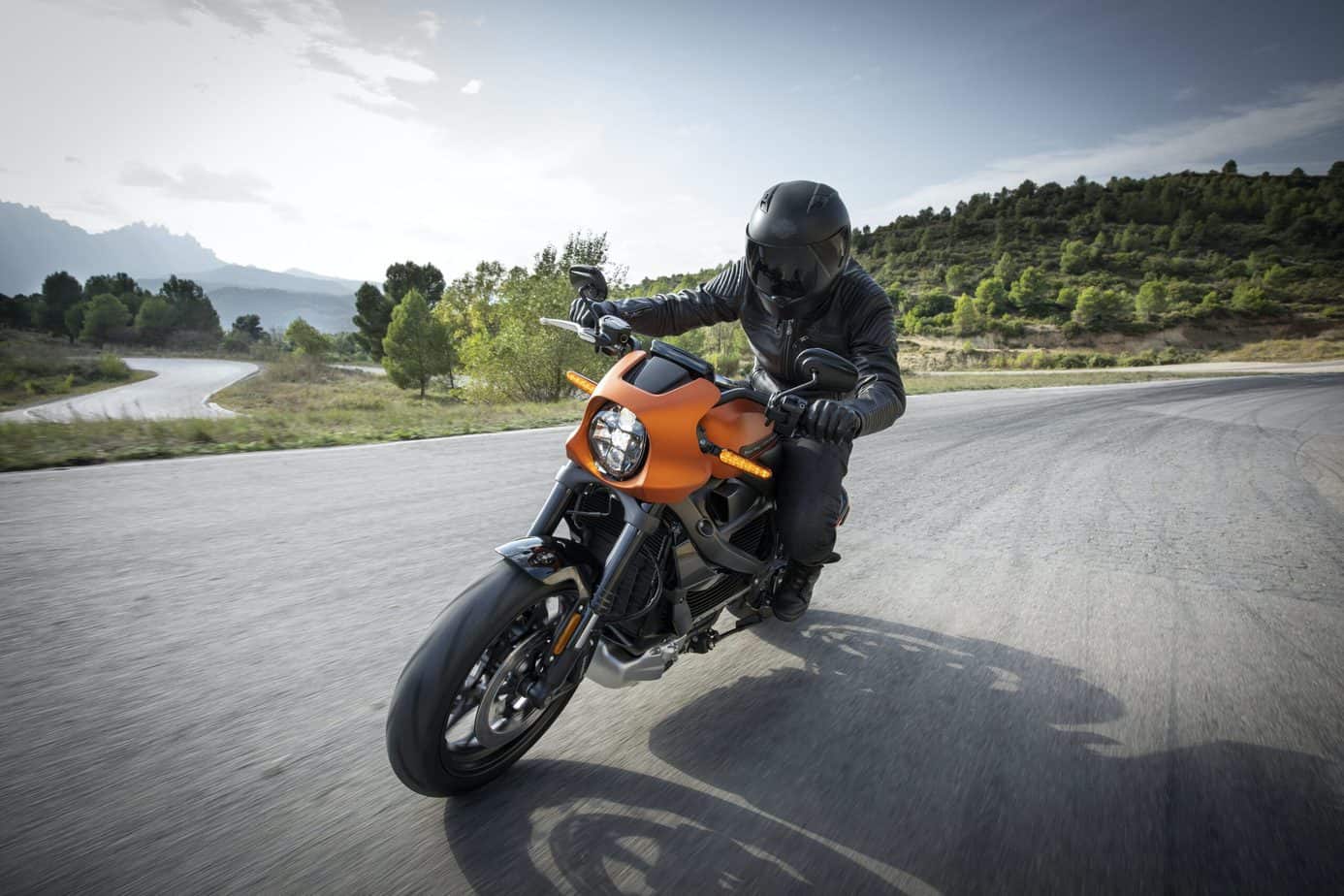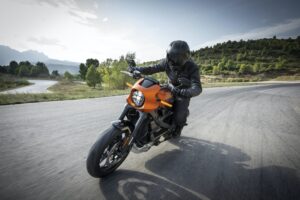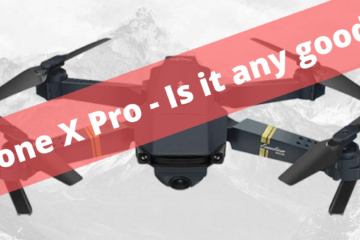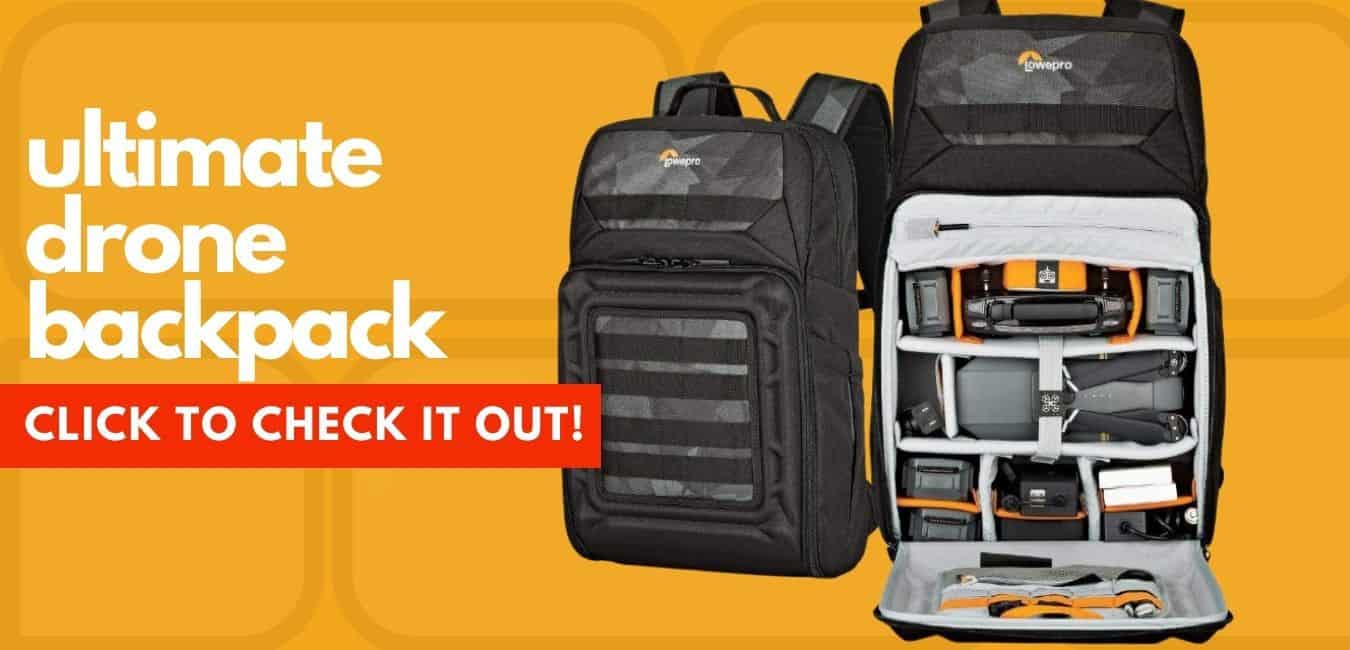The Top 5 4K Drones In 2022 Reviewed And Compared

TranscendFPV is a reader supported product and review site. Clicking on links to learn more, or buy products, may earn us money, and support our work. Learn more about the history of TranscendFPV and our passion on our About page.
Specifically, you want a 4K drone, to take those beautiful photos and buttery smooth video clips, right?

Photo by Harley-Davidson on Unsplash
Since their appearance, commercial drones (That’s our list of the best professional drones by the way) have become a massive trend among videographers and photographers. These unmanned aerial vehicles (UAVs) never stopped evolving and improving in terms of specifications and incredible tech we once thought impossible for such small devices.
Of course, SOME models are nothing more than glorified toys for children.
These are usually pretty affordable but have only some basic features. However, some drones are far more suitable for the cinematic industry, offering features that put other drones to shame.
These professional-grade UAVs are usually equipped with the latest 4K cameras, allowing videographers to improve the quality of the footage significantly. They offer great features and a fantastic number of creative possibilities for every user.










What to look for in a 4K drone
4K video recording is becoming the entry point into professional aerial filming and photography.
If you want to make videos (travel vlogs, films etc), you’ll need to have 4K.
The main reason is that the aerial footage taken by a 4K camera drone looks fantastic. It delivers four times as much detail as the FHD camera does. But 4K isn’t just about increasing resolution four times. It supports faster frame rates, better colors, and contrast.
It’s basically better in every single way.
Still, a 4K camera on its own isn’t enough to produce high-quality aerial footage. The 4K aerial drones should take some of the credit, too. Most of these UAV’s sport amazing features like precision stabilization for eliminating camera shakes. There are also numerous autonomous flight modes, like orbit, follow-me function, or active tracking, making the creative process more manageable.
Things like a gimbal and obstacle avoidance play a big part in getting good 4K footage from your drone.
These devices usually don’t come cheap, but obstacle avoidance is a type of function that protects your investment. So does the “Return Home” option, which will fly the drone back to the location of its remote controller.
Build quality and battery life are also important. Most professional-grade quadcopters are made of aluminum alloy, or carbon fiber, with a flight time of about half an hour.
They’re expensive
All those fantastic options bring us to the matter of price…
Price varies depending on the build quality, build type, camera type, accessories, etc. When it comes to 4K drones, you get what you’re paying for, and if you want top quality, you’ll have to pay more for it.
Drones capable of shooting in 4K come in many shapes and sizes. Because they are such pricey pieces of equipment, you should do your research, and pick a drone best suited for your needs.
These are some of the best models capable of shooting 4K available on the market:
The best 4K drones you can buy
By the way, this list isn’t in any particular order and the links should open in new tabs. A lot of these drones are from DJI, because let’s be honest they’re leading the way with drones in many ways.
1. DJI Mavic Air
The DJI Mavic Air is a compact, foldable drone, and the smallest member of DJI’s Mavic product line. Positioned between the consumer and professional-grade drones, Mavic Air offers excellent image quality, an abundance of great options, and travel-friendly design.
The first thing you’ll notice is how small this drone is. It’s quite a bit smaller than Mavic Pro and Mavic Pro 2, bit just slightly bigger than the smaller DJI Spark. Great portability of Mavic Air is maybe one of the best features in its design. Thanks to the foldable rotor arms, the drone is extremely compact and easy to carry.
The all-new obstacle avoidance system includes forward, backward, and downward sensors, allowing the drone to chart a different path around and over obstacles automatically.
This is an excellent feature since it can stop the drone in its tracks to avoid crashing into objects, allowing you a safe flight. However, the Advanced Pilot Assistance System only works in manual flight mode, and not in any of the drone’s intelligent flight modes.
In addition to DJI’s previous flight modes, the Mavic Air introduces two new ones. Intelligent flight modes allow any beginner to take nice-looking shots and stills; however, none of the methods incorporate the APAS avoidance system while flying.
DJI Mavic Air sports a 32MP spherical panoramic camera that can capture 4K videos, and 12MP stills. Video is at 4K with 30fps, and a 100Mbps bit rate. It also captures 2.7K/60fps and 1080p/120fps, although at a lower bit rate. Mavic Air captures mechanically stabilized 4K footage, achieving great shots even when the drone is flying at high speeds.
Overall performance of Mavic Air is outstanding, considering its size and design. The best price can be found here, or you could read my full review of the Mavic Air before buying!
Pros:
- Great flight performance
- Captivating footage
- Long flight time
- Onboard storage (8GB)
Cons:
- The controller doesn’t come with a display screen
2. Parrot Anafi
This bug-like, thin drone, with an incredible 4K camera, is an excellent choice for flight experts and filmmakers. It’s lightweight, slim, and doesn’t take up much space in your bag.
The arthropod-inspired frame and maneuverable eyeball camera at its head are potential game-changers in drone photography and videography, thanks to the cameras 180° vertical range. Since the camera isn’t directly attached to the frame, the vast vertical range allows you to take shots directly upwards, which is something no other drone can do.
The carbon-fiber elements of the chassis may feel a little cheap, but in reality, the frame quality is quite decent and well-made. The downside is that Anafi has no obstacle avoidance sensors so you might damage the drone if you miss judge a fly-by, making this model unsuitable for beginner pilots.
The lack of obstacle avoidance sensors is what allows for the cameras 180° vertical range. If you are an experienced pilot, this might come as a relief, allowing you to take photos, without having to get to close to your subject.
Assuming you’re experienced enough to avoid a crash, the footage you took with Anafi’s camera is of a top-quality. The camera shoots at 4K resolutions, with appropriate frame and bit rates. On top of that, Parrot added the ability to shoot cinema-style 24fps, along with the ability to capture HDR video and snap 21MP photos.
The HDR feature is a great addition, but unfortunately, it doesn’t work particularly well. The camera does pick up a rich palette of colors, but the footage looks oversaturated. With the HDR disabled, the footage is crisp, clear, and looks spectacular.
There’s also a host of different camera modes to choose from. The Pro mode allows you to manually set the shutter speed, ISO, white balance, and exposure compensation. There are different filming modes available as well, some of which are very fun to use.
In summary, the Parrot Anafi is a pretty good product that competes with the Mavic Air. It’s even superior in a few areas, being quieter, easier to charge, and sporting a slightly better 4K camera. However, it falls short in some areas, given the lack of obstacle avoidance, and better flight performance of Mavic Air.
Pros:
- Great video and stills quality
- Excellent battery life
- Simple to fly
Cons:
- No object avoidance
3. DJI Inspire 2
The DJI Inspire 2 is perhaps one of the top-level drones on the market, offering top-notch safety functions, outstanding build quality, and stunning optics.
If you’re familiar with Inspire 1, Inspire 2 won’t be much of a surprise, since it isn’t a huge departure from the original model. Instead of a complete redesign, DJI took the winning formula and made small upgrades.
The body of the new model is made of aluminum-magnesium alloy, instead of the white plastic of the previous model. Thanks to its revised bodywork, the new model is even more robust than the original. The arms are made of super-strong carbon-fiber tubing, with the only weak spot being the plastic propellers, which are easily replaceable.
Another noticeable design change is a new FPV camera and obstacle avoidance system, mounted on a bar in front of the drone. These track for incoming objects 100ft ahead and 15ft above the drone, which is handy if you’re flying in enclosed spaces.
This entire obstacle avoidance tech makes the drone almost impossible to crash. It’s intelligent enough to avoid trees or smashing into the ground. However, these safety features limit the top speed at 45mph. If you’re confident enough, disabling these safety features allows the drone to achieve top-speed of approximately 58mph.
Inspire 2 doesn’t actually come with a camera attached. Instead, it’s designed to work with DJI’s Zenmuse cameras: the X4S, X5S, and X7S. The X5S was created with the Inspire 2 in mind. It captures not only in 4K but also in 5.2K. Videos captured in 5.2K sport a 30fps rate, while 4K allows for 60fps.
The twin-battery arrangement allows for about 25 minutes of flight time. Any more than that and the drone goes into emergency landing mode. As for the recharge time, the battery takes about an hour and a half to reach full capacity.
The Inspire 2 is, without a doubt, one of the best drones on the market. You can find the best price for it here, or you could read our full review of the DJI Inspire 2 to get a better understanding of how it works technically.
Pros:
- Amazing build quality
- Plenty of features
- Extremely reliable
- Good battery life
Cons:
- Pricey
4. Hover Camera Passport
Drones entered a new stage in their evolution, being built for specific types of use, rather than just sporting all the features known to us. Following that principle, the Hover Passport Camera is a device made specifically for selfies and follow footage.
The most significant feature of this model is its foldable design, making this drone incredibly portable. It can easily fit in your backpack or a purse. A slim spine housing all the machines electronics, along with a pair of enclosed props guards, are all a part of this portable design. The device weighs only 0.5 pounds with the battery included, adding to its incredible portability.
Carbon fiber propeller guards provide several significant advantages, as they protect the propellers from a run-in with various obstacles. This safety feature is potentially a game changer – making the drone more approachable and safer to use. Thanks to these prop guards, you can launch the drone from the palm of your hand, and even pluck it out of the air when you’re done flying it.
By design, this model is a flying camera robot, which means it’s not meant for manual flight. It’s designed to stay close and follow you wherever you go. However, the accompanying app provides several controller-layout options.
The strongest points are its autonomous flight modes and image recognition software. Face Track and Body Track allow the Passport to track whoever you choose, and do whatever to keep the subject in the frame.
The camera can shoot in 4K, 1080p, and 720p, but it’s limited to only 30fps, regardless of the resolution. Since it has no gimbal or mechanical stabilization, it relies on the combination of a single-axis swivel and digital stabilization. Also, the camera has a built-in flash, making it ideal for group photography.
Pros:
- Ultra-portable design
- Face/body tracking
- Prop guards
Cons:
- Limited image stabilization
- 30fps regardless of resolution
5. PowerVision PowerEye
The PowerVision introduces the PowerEye, a professional-level drone, not just capable of great footage, but offering great features as well.
This professional-level model drone is quite large and bulky, weighing almost 8lbs. It’s foldable, with detachable landing gear, so it fits nicely in its carrying case.
The dual camera setup allows for two simultaneous video streams, with 4K UHD camera, and thermal and natural light camera. Thermal capabilities of this model detect heat signatures, which can be used by emergency services for detecting fires, or any heat source for that matter.
Dual view allows for an FPV for the drone pilot, and SMV (subject matter view) footage. The SMV camera sits on a 3-axis gimbal, producing quality still images at 4,640×3,480 pixels. Video can be shot in 4K at 24fps, and UHS at 30fps.
Since it doesn’t offer some of the flight modes you would find on other premium drones; this model is meant for experienced pilots. And since it’s designed to be operated by a professional pilot, the lack of object avoidance should come as no surprise.
It does offer object detection, showing you distances to nearby objects, and issue a warning if you get too close. There is also optical positioning and a sonar system for more accurate indoor flight.
PowerEye comes with a battery that provides an impressive 30 minutes of flight time. Another great feature this model has to offer is the ability to carry a 6.6lbs payload. Given the vast number of professional features, a rock-solid build quality, it’s pretty clear that this drone is aimed at professional users.
Pros:
- Interchangeable lenses
- Thermal mode
- Quality build
Cons:
- Lacks object avoidance
- Bulky
Which consumer DJI drone has the best camera?
DJI have been making the best drones on the market for videography and beginners for a LONG time. They pretty much only compete with themselves. Now, they don’t make racing drones (yet) but for most other categories they’re dominating.
In terms of the best camera, at the time of writing (July 2020), the DJI drone with the best camera is the Phantom 4 PRO with a camera capable of 4K at 60fps.
That being said, the other drones are VERY close and specifically, the Mavic Pro or the Mavic Air are now getting better and better. IMPORTANT: This is only comparing the consumer drones they sell. They sell much better drones like the DJI Inspire and the professional drones in their range.
Those drones are obviously capable of much more but it’s not really a fair comparison because you can attach ANY camera to them, so it’s not really about the drone and what it comes with in the box.
What’s the best drone for 4K videography in 2021?
Well, it depends how BIG you want the drone to be. As I said earlier, if you want to sink a lot of money into a drone and be able to attach your OWN camera to it, you can get the camera to be as good as you like. We have a list of the best professional drones but they’re expensive.
If you’re just looking to buy one that works out of the box, then the best drone with the best 4K camera is the DJI Phantom 4. That being said, it’s pretty big so you might want to consider something smaller but with a similar camera (Still 4K but just less fps) like the Mavic Air.
Best drone for photography in 2021?
For photography it has to be the Mavic Pro Zoom. This drone can do lots of things specifically for photography that some of the other drones (even some of the other DJI drones) can’t do.
That being said, it’s probably NOT the best bet for filming videos (although the video quality is also EXCELLENT).
What’s the best 4K drone for traveling?
Well, for traveling you really want the drone to be as SMALL and lightweight as possible. It’s actually really annoying having to bring an entire bag or suitcase JUST for a drone (which Phantom owners have to do). So the best drone for traveling has to be either a Mavic which can fold up, or the Mavic AIR which is super small, light and still has 4K video!
















